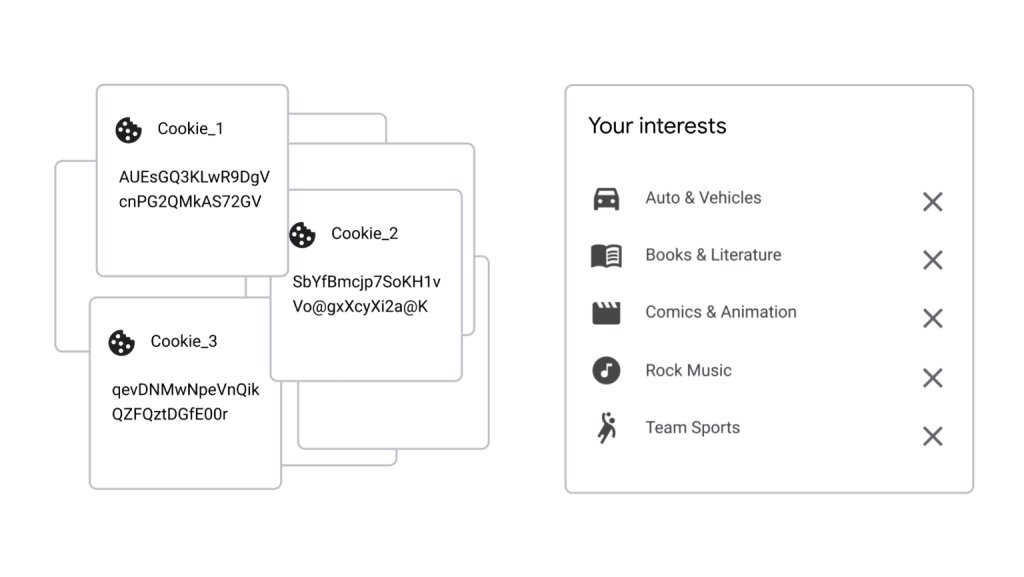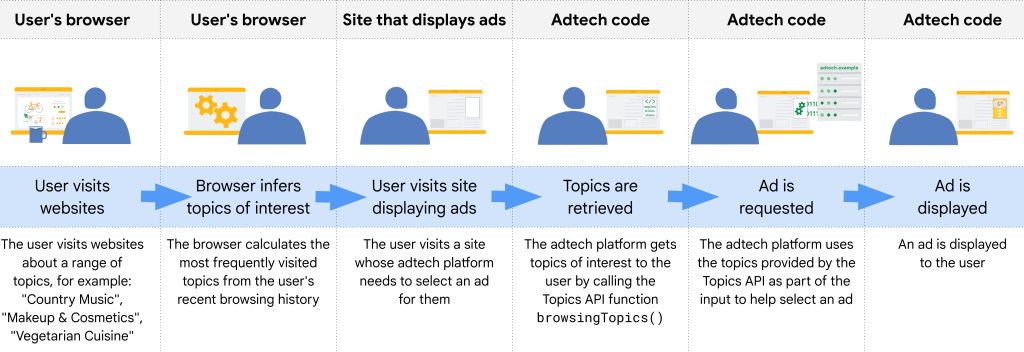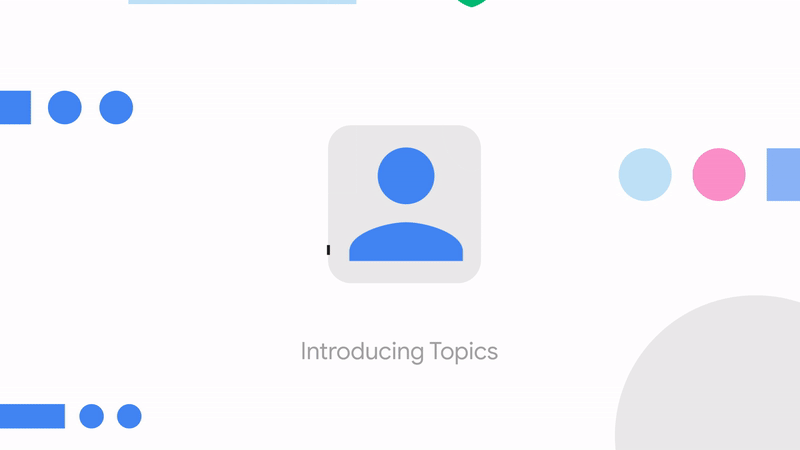Recently Google have been providing a number of updates to the The Privacy Sandbox proposals to satisfy third-party use cases without the use of third-party cookies or other tracking mechanisms.
A key part of these is the proposed approach to enabling cross-site interest-based advertising (once third-party cookies deprecate) which have been upgraded from FLoC to a more simple and privacy-safe version of inferred behavioral targeting – called Topics.
See below for an overview of Topics – and for an overview of FLEDGE click here and for an introduction to, and a summary of recent updates to the Attribution Reporting API click here.
 The key top level considerations for marketers and publishers are:
The key top level considerations for marketers and publishers are:
- The top 5 Topics are calculated each week for each user within the Chrome browser.
- Upon visiting a participating website the Topics API will will anonymously aggregate users into 3 initial Topics, based upon their browsing behaviours and interests.
- One Topic is selected from each of the past three weeks and is then shared with both the site and its advertising partners for targeting purposes.
- An initial taxonomy of 350 Topics will be leveraged, originally based upon the IAB Tech Lab Audience Taxonomy.
- For sites that are yet to be categorised, or opt-out, a lightweight machine learning algorithm in the browser will take over and provide an estimated topic based on the name of the domain. See below for this process.
- Publishers can opt in and out of the process.
- Consumers can opt in and out of the process (via the chrome browser).
For sites that are yet to be categorised, or opt-out, the Topics API proposes using machine learning to infer topics from hostnames. The classifier model for this would initially be trained by the browser vendor, or a trusted third party, using human-curated hostnames and topics. The model would be distributed with the browser, so it would be openly developed and freely available.
The browser, on the user’s device, could then use the model to calculate the most popular topics for a user, based on the hostnames of the sites recently visited. The diagram below outlines a simplified example, showing how the Topics API might help an adtech platform to select an appropriate ad. This example assumes that the user’s browser already has a model to map website hostnames to topics.

We recommend that both buyers and sellers engage in the forthcoming testing and origin trials, either directly or via their vendor partners, so as to fully understand this proposal as it evolves – and the related opportunities and challenges.
For a review of the recent update on FLEDGE (for re-marketing) please simply click here
For a review of the updates to Google’s proposals for their Attribution Reporting API click here
Google have also released a simple video to help explain this overall approach. Simply click on the image below to access this:
For further reading please follow the link from Google below: